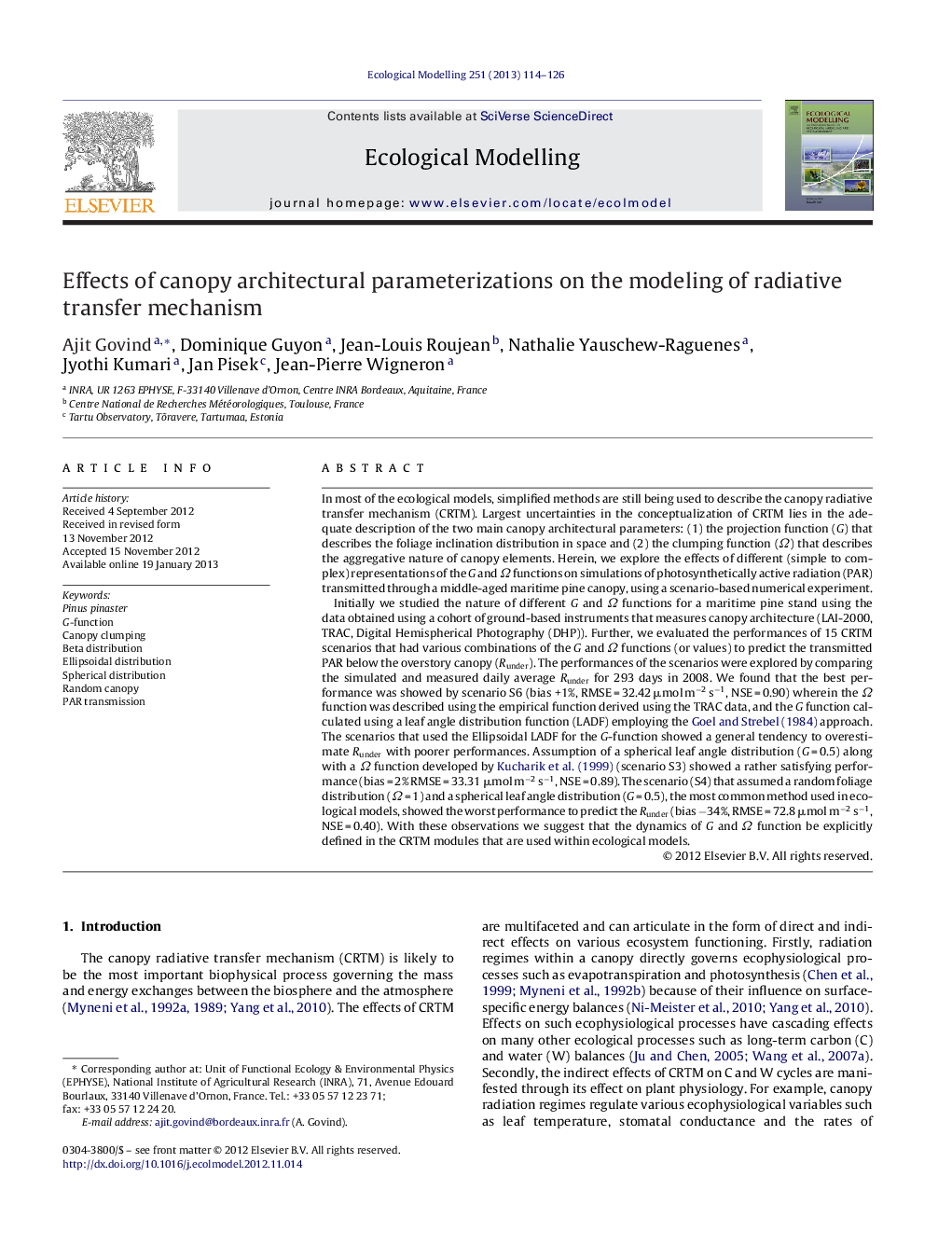| کد مقاله | کد نشریه | سال انتشار | مقاله انگلیسی | نسخه تمام متن |
|---|---|---|---|---|
| 4376147 | 1617494 | 2013 | 13 صفحه PDF | دانلود رایگان |

In most of the ecological models, simplified methods are still being used to describe the canopy radiative transfer mechanism (CRTM). Largest uncertainties in the conceptualization of CRTM lies in the adequate description of the two main canopy architectural parameters: (1) the projection function (G) that describes the foliage inclination distribution in space and (2) the clumping function (Ω) that describes the aggregative nature of canopy elements. Herein, we explore the effects of different (simple to complex) representations of the G and Ω functions on simulations of photosynthetically active radiation (PAR) transmitted through a middle-aged maritime pine canopy, using a scenario-based numerical experiment.Initially we studied the nature of different G and Ω functions for a maritime pine stand using the data obtained using a cohort of ground-based instruments that measures canopy architecture (LAI-2000, TRAC, Digital Hemispherical Photography (DHP)). Further, we evaluated the performances of 15 CRTM scenarios that had various combinations of the G and Ω functions (or values) to predict the transmitted PAR below the overstory canopy (Runder). The performances of the scenarios were explored by comparing the simulated and measured daily average Runder for 293 days in 2008. We found that the best performance was showed by scenario S6 (bias +1%, RMSE = 32.42 μmol m−2 s−1, NSE = 0.90) wherein the Ω function was described using the empirical function derived using the TRAC data, and the G function calculated using a leaf angle distribution function (LADF) employing the Goel and Strebel (1984) approach. The scenarios that used the Ellipsoidal LADF for the G-function showed a general tendency to overestimate Runder with poorer performances. Assumption of a spherical leaf angle distribution (G = 0.5) along with a Ω function developed by Kucharik et al. (1999) (scenario S3) showed a rather satisfying performance (bias = 2% RMSE = 33.31 μmol m−2 s−1, NSE = 0.89). The scenario (S4) that assumed a random foliage distribution (Ω = 1) and a spherical leaf angle distribution (G = 0.5), the most common method used in ecological models, showed the worst performance to predict the Runder (bias −34%, RMSE = 72.8 μmol m−2 s−1, NSE = 0.40). With these observations we suggest that the dynamics of G and Ω function be explicitly defined in the CRTM modules that are used within ecological models.
► Demonstrated the variability of the G and Ω with SZA in a forest stand.
► Show that the simplified G and Ω functions create biased simulation of CRTM.
► Identified the best combination of G and Ω parameterizations.
Journal: Ecological Modelling - Volume 251, 24 February 2013, Pages 114–126